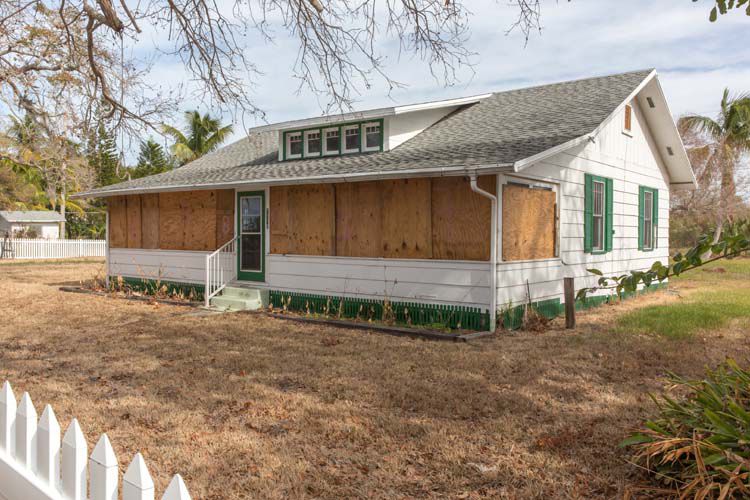
After surviving more than 120 years of wind and weather along the Indian River, Jones Pier and homestead were hit hard by Hurricane Matthew, as flood waters pushed by the storm surge poured through the house and nearby cottage, rendering them uninhabitable.
The loss of the historic structures would be a blow to the island’s heritage but, happily, the County Commission seems poised to fund repairs and maintain the site going forward.
After inspecting the damage caused by the flooding, County Public Works Director Richard Szpyrka reported that “major repairs are necessary, including removal of water-damaged drywall, cabinetry and flooring.”
County Historian Ruth Stanbridge said “the river crossed the road over to the east side” and there is mud everywhere inside the house.
In order to avoid future flood damage, Szpyrka recommended that the house be “raised significantly from its current elevation.”
Although no estimates have been made yet, County Administrator Jason Brown foresees the likely costs, including raising the home’s elevation, as substantial. Because of the property’s location, Brown said, flood insurance isn’t feasible.
He informed the Board that since the property is a registered historic site, the “best shot” at a funding source is the Federal Emergency Management Agency, through the National Historic Preservation Act. Brown expected to be in contact with the Agency early in the week, and report back to the Board shortly thereafter.
Carolyn Bayless, president of the Indian River County Historical Society, is relieved the county plans to repair the property. She said the Jones Pier site “has been one of the Society’s major projects for a number of years. It is an integral part of the county’s history.” Stanbridge added that the property has regional, statewide and even national significance and is “well worth repair.”
More than a century ago Jones Pier was a well-known stopping point where visitors loaded up on Orchid Island citrus fruit, and local fishermen got ice and swapped stories with Seaborn Jones, who homesteaded the original 160 acres. The Jones family and their neighbors were responsible for building the Orchid Narrows Road, now known as Jungle Trail.
Under Seaborn Jones’ grandson, Richard Milton Jones, the pier and fruit stand continued to thrive. He was as adept as his grandfather at sharing stories with all who stopped by, holding court on the front yard swing, his wife, Mary, beside him. Among the scores of friends and visitors Jones’ entertained was expert sailor and television newscaster Walter Cronkite.
The County purchased Jones’ house, dock and remaining 16 acres of land for conservation and historic preservation in 2008 for $6.75 million, aided by a 45 percent cost-share grant from the Florida Communities Trust. Richard Milton Jones and his wife were allowed to live in the house as caretakers under a life estate agreement.
After the couple passed away, the County entered into an agreement with Sheriff’s Sgt. Brad Fojtik, a member of the Sheriff’s Agriculture and Marine Unit. Fojtik and his wife were allowed to reside in the house in exchange for providing the historic site with a police presence, maintaining the buildings, mowing the lawn, and keeping invasive Brazilian Pepper trees at bay.
In the wake of the storm, Fojtik and his wife were forced to make other living arrangements, and the Commission terminated the County’s tenant agreement with Fojtik last month. The termination document included the assurance that “at such time as the premises become habitable, the County may enter into a license agreement with Mr. Fojtik.”
Commission Chairman Joe Flescher praised the outstanding job the Fojtiks have done as “good stewards” of the property, and emphasized that the termination was not a negative reflection in any way, but a simple administrative process.



